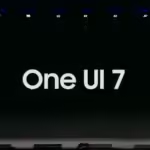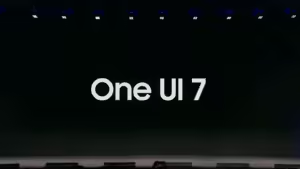
Ultimate Guide to Minecraft Server Security: Protecting Your Server and Players
Hosting your own Minecraft server brings incredible flexibility, letting you control every aspect of the game and create a community for friends or fans. However, with this power comes responsibility. Security risks, from IP exposure to DDoS attacks and malware, are real threats. Here’s an in-depth guide to securing your Minecraft server, whether you’re hosting on your own PC or through a hosting provider.
Let’s dive into common threats, best practices, and actionable steps to help you secure your Minecraft world and protect your data and players. 🛡️✨
⚠️ Key Minecraft Server Security Risks
Here are some common risks you might encounter when hosting a Minecraft server:
1. IP Exposure and DDoS Attacks
- Risk: Sharing your IP address with players allows them to connect to your server, but it also makes your IP vulnerable. If malicious players obtain it, they could launch Distributed Denial of Service (DDoS) attacks, which can overwhelm your network, causing slowdowns, server crashes, and potentially affecting other devices on your network.
- Solution: Consider using a third-party VPN or DDoS protection service to mask your IP address. Many dedicated server hosting providers offer DDoS protection as part of their packages, making it harder for attackers to target you directly.
2. Unauthorized Access to Server Console
- Risk: The server console is where you control everything on your Minecraft server—settings, commands, plugins, and more. If unauthorized users gain access, they could change game settings, install malware, or even ban players.
- Solution: Protect console access with strong, unique passwords and limit access to trusted players only. Always use different passwords for your server console, Minecraft accounts, and hosting accounts.
3. Malware and Viruses from Plugins and Mods
- Risk: Plugins and mods can enhance your server’s features, but downloading them from unverified sources can introduce malware or viruses that compromise your server and data.
- Solution: Only use plugins and mods from reputable sites like CurseForge or Bukkit, and scan files with antivirus software before installation.
4. Privilege Escalation by Untrusted Players
- Risk: Granting “Admin” or “OP (Operator)” status to untrusted players gives them access to powerful server commands. If misused, they could destroy structures, ban other players, or make unauthorized changes.
- Solution: Assign Admin and OP roles carefully and only to trusted individuals. Use permissions plugins like LuckPerms or PermissionsEx to customize permissions and control who has access to what.
5. Phishing and Social Engineering Attacks
- Risk: Attackers may try to trick admins into sharing sensitive information, like console login details or IP addresses, through fake emails, messages, or other deceptive tactics.
- Solution: Avoid clicking on suspicious links or responding to unusual requests, especially from players you don’t know well. Keep your login details secure and only share sensitive information with trusted contacts.
6. Open Ports and Unsecured Connections
- Risk: Hosting a Minecraft server requires opening a port (usually 25565) on your router. Open ports can expose your network to unwanted traffic and potential attacks if not properly secured.
- Solution: Use secure port-forwarding practices, and consider firewall restrictions to limit access. Open only necessary ports and keep a close watch on network traffic for any suspicious activity.
7. Data Loss and Inadequate Backup Protocols
- Risk: Without regular backups, you risk losing all game progress, settings, and player data if your server crashes, is hacked, or is corrupted.
- Solution: Schedule automated backups to a secure location like cloud storage or a different device. Use plugins that automate this process to avoid manual backups.
🛠️ Best Practices for Minecraft Server Security
1. Enable Strong Passwords and Two-Factor Authentication (2FA)
- Passwords: Choose complex passwords that combine letters, numbers, and symbols. Avoid using the same password across multiple platforms.
- Two-Factor Authentication: Many server providers support 2FA for extra security. Enable this feature whenever possible.
2. Use a Whitelist to Limit Access
- A whitelist only allows pre-approved usernames to join the server, keeping untrusted players out.
- Implement this by adding usernames to a whitelist file in your server settings. This adds a layer of control, especially useful for private servers.
3. Install Anti-Cheat and Anti-Grief Plugins
- Plugins like NoCheatPlus and CoreProtect provide anti-cheat measures, track player actions, and can help revert any damage caused by griefing.
- NoCheatPlus identifies and blocks hacks, while CoreProtect logs player activity and enables you to roll back damage or unauthorized changes.
4. Regularly Update Minecraft, Plugins, and Mods
- Outdated software often contains vulnerabilities that attackers can exploit. Make it a habit to stay updated with the latest releases for Minecraft, plugins, and mods.
- Join developer channels for plugins you use to receive timely updates and security patches.
5. Monitor Server Activity and Logs
- Reviewing server logs can help identify unusual patterns or suspicious activities (e.g., multiple failed login attempts).
- Many hosting providers offer real-time monitoring tools to track server health and player actions. Consider using these tools if you’re running a larger server.
6. Use VPN or Proxy for IP Masking
- A VPN or proxy server can hide your actual IP address, protecting it from potential DDoS attacks.
- Many hosting providers include VPN or IP masking services. Use these if you’re hosting your own server to keep your IP protected.
7. Schedule Regular Backups
- Backups are essential for preventing data loss. Set up automated backups, either through plugins or manually, to ensure your server data is stored safely.
- Store backups on a secure cloud service or external device for easy restoration in case of data loss or a breach.
🔍 Additional Resources and Links
- Official Minecraft Security Guide: Minecraft Security FAQ
- Minecraft Plugins and Mods: Find reputable plugins on SpigotMC or CurseForge.
- Anti-Cheat Plugins: NoCheatPlus on Bukkit
📝 Frequently Asked Questions
1. How do I prevent DDoS attacks on my server?
Use a VPN or proxy service to mask your IP, or choose a hosting provider with DDoS protection. This keeps attackers from targeting your network directly.
2. What plugins are best for preventing griefing?
CoreProtect is great for tracking and undoing changes, while GriefPrevention provides tools to claim land and prevent unauthorized building.
3. Can I secure a Minecraft server on a home PC?
Yes, securing a server on a home PC is possible but requires diligence. Use a whitelist, strong passwords, firewall settings, and reliable anti-virus software.
4. What’s the safest way to add plugins?
Always download from reputable sources like SpigotMC or CurseForge, and avoid third-party sites. Keeping plugins updated is also crucial to avoid vulnerabilities.
🌟 Conclusion
By implementing these security measures, you can keep your Minecraft server safe from common threats and protect your players’ gaming experience. Hosting a server is rewarding, but security is key to ensuring a fun and safe environment. Stay vigilant, update regularly, and back up your data to avoid potential pitfalls. Happy gaming, and welcome to a safer Minecraft experience! 🎉🌍
























Post Comment